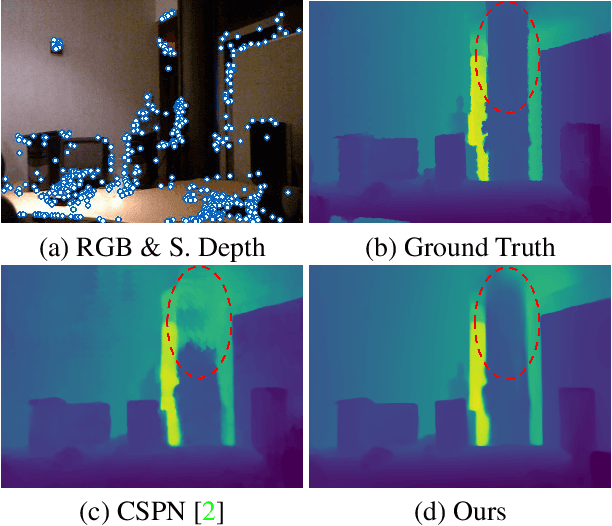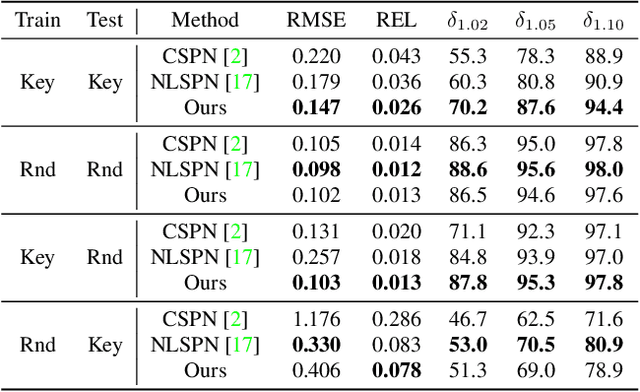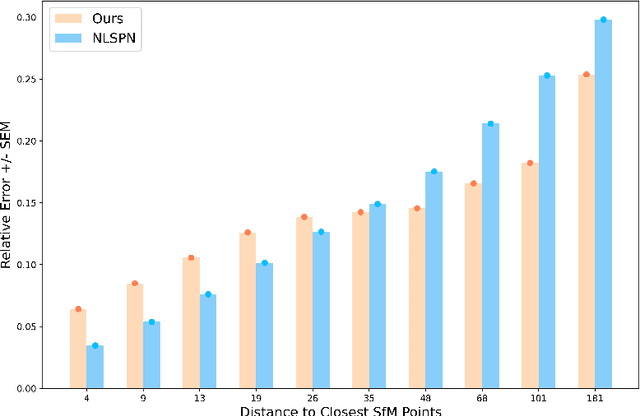Jae Yong Lee
FourierSpecNet: Neural Collision Operator Approximation Inspired by the Fourier Spectral Method for Solving the Boltzmann Equation
Apr 29, 2025Abstract:The Boltzmann equation, a fundamental model in kinetic theory, describes the evolution of particle distribution functions through a nonlinear, high-dimensional collision operator. However, its numerical solution remains computationally demanding, particularly for inelastic collisions and high-dimensional velocity domains. In this work, we propose the Fourier Neural Spectral Network (FourierSpecNet), a hybrid framework that integrates the Fourier spectral method with deep learning to approximate the collision operator in Fourier space efficiently. FourierSpecNet achieves resolution-invariant learning and supports zero-shot super-resolution, enabling accurate predictions at unseen resolutions without retraining. Beyond empirical validation, we establish a consistency result showing that the trained operator converges to the spectral solution as the discretization is refined. We evaluate our method on several benchmark cases, including Maxwellian and hard-sphere molecular models, as well as inelastic collision scenarios. The results demonstrate that FourierSpecNet offers competitive accuracy while significantly reducing computational cost compared to traditional spectral solvers. Our approach provides a robust and scalable alternative for solving the Boltzmann equation across both elastic and inelastic regimes.
Can We Predict the Effect of Prompts?
Jan 31, 2025



Abstract:Large Language Models (LLMs) are machine learning models that have seen widespread adoption due to their capability of handling previously difficult tasks. LLMs, due to their training, are sensitive to how exactly a question is presented, also known as prompting. However, prompting well is challenging, as it has been difficult to uncover principles behind prompting -- generally, trial-and-error is the most common way of improving prompts, despite its significant computational cost. In this context, we argue it would be useful to perform `predictive prompt analysis', in which an automated technique would perform a quick analysis of a prompt and predict how the LLM would react to it, relative to a goal provided by the user. As a demonstration of the concept, we present Syntactic Prevalence Analyzer (SPA), a predictive prompt analysis approach based on sparse autoencoders (SAEs). SPA accurately predicted how often an LLM would generate target syntactic structures during code synthesis, with up to 0.994 Pearson correlation between the predicted and actual prevalence of the target structure. At the same time, SPA requires only 0.4\% of the time it takes to run the LLM on a benchmark. As LLMs are increasingly used during and integrated into modern software development, our proposed predictive prompt analysis concept has the potential to significantly ease the use of LLMs for both practitioners and researchers.
Hamilton-Jacobi Based Policy-Iteration via Deep Operator Learning
Jun 16, 2024Abstract:The framework of deep operator network (DeepONet) has been widely exploited thanks to its capability of solving high dimensional partial differential equations. In this paper, we incorporate DeepONet with a recently developed policy iteration scheme to numerically solve optimal control problems and the corresponding Hamilton--Jacobi--Bellman (HJB) equations. A notable feature of our approach is that once the neural network is trained, the solution to the optimal control problem and HJB equations with different terminal functions can be inferred quickly thanks to the unique feature of operator learning. Furthermore, a quantitative analysis of the accuracy of the algorithm is carried out via comparison principles of viscosity solutions. The effectiveness of the method is verified with various examples, including 10-dimensional linear quadratic regulator problems (LQRs).
MonoPatchNeRF: Improving Neural Radiance Fields with Patch-based Monocular Guidance
Apr 12, 2024Abstract:The latest regularized Neural Radiance Field (NeRF) approaches produce poor geometry and view extrapolation for multiview stereo (MVS) benchmarks such as ETH3D. In this paper, we aim to create 3D models that provide accurate geometry and view synthesis, partially closing the large geometric performance gap between NeRF and traditional MVS methods. We propose a patch-based approach that effectively leverages monocular surface normal and relative depth predictions. The patch-based ray sampling also enables the appearance regularization of normalized cross-correlation (NCC) and structural similarity (SSIM) between randomly sampled virtual and training views. We further show that "density restrictions" based on sparse structure-from-motion points can help greatly improve geometric accuracy with a slight drop in novel view synthesis metrics. Our experiments show 4x the performance of RegNeRF and 8x that of FreeNeRF on average F1@2cm for ETH3D MVS benchmark, suggesting a fruitful research direction to improve the geometric accuracy of NeRF-based models, and sheds light on a potential future approach to enable NeRF-based optimization to eventually outperform traditional MVS.
Learning time-dependent PDE via graph neural networks and deep operator network for robust accuracy on irregular grids
Feb 13, 2024Abstract:Scientific computing using deep learning has seen significant advancements in recent years. There has been growing interest in models that learn the operator from the parameters of a partial differential equation (PDE) to the corresponding solutions. Deep Operator Network (DeepONet) and Fourier Neural operator, among other models, have been designed with structures suitable for handling functions as inputs and outputs, enabling real-time predictions as surrogate models for solution operators. There has also been significant progress in the research on surrogate models based on graph neural networks (GNNs), specifically targeting the dynamics in time-dependent PDEs. In this paper, we propose GraphDeepONet, an autoregressive model based on GNNs, to effectively adapt DeepONet, which is well-known for successful operator learning. GraphDeepONet exhibits robust accuracy in predicting solutions compared to existing GNN-based PDE solver models. It maintains consistent performance even on irregular grids, leveraging the advantages inherited from DeepONet and enabling predictions on arbitrary grids. Additionally, unlike traditional DeepONet and its variants, GraphDeepONet enables time extrapolation for time-dependent PDE solutions. We also provide theoretical analysis of the universal approximation capability of GraphDeepONet in approximating continuous operators across arbitrary time intervals.
Region-Based Representations Revisited
Feb 04, 2024Abstract:We investigate whether region-based representations are effective for recognition. Regions were once a mainstay in recognition approaches, but pixel and patch-based features are now used almost exclusively. We show that recent class-agnostic segmenters like SAM can be effectively combined with strong unsupervised representations like DINOv2 and used for a wide variety of tasks, including semantic segmentation, object-based image retrieval, and multi-image analysis. Once the masks and features are extracted, these representations, even with linear decoders, enable competitive performance, making them well suited to applications that require custom queries. The compactness of the representation also makes it well-suited to video analysis and other problems requiring inference across many images.
HyperDeepONet: learning operator with complex target function space using the limited resources via hypernetwork
Dec 26, 2023Abstract:Fast and accurate predictions for complex physical dynamics are a significant challenge across various applications. Real-time prediction on resource-constrained hardware is even more crucial in real-world problems. The deep operator network (DeepONet) has recently been proposed as a framework for learning nonlinear mappings between function spaces. However, the DeepONet requires many parameters and has a high computational cost when learning operators, particularly those with complex (discontinuous or non-smooth) target functions. This study proposes HyperDeepONet, which uses the expressive power of the hypernetwork to enable the learning of a complex operator with a smaller set of parameters. The DeepONet and its variant models can be thought of as a method of injecting the input function information into the target function. From this perspective, these models can be viewed as a particular case of HyperDeepONet. We analyze the complexity of DeepONet and conclude that HyperDeepONet needs relatively lower complexity to obtain the desired accuracy for operator learning. HyperDeepONet successfully learned various operators with fewer computational resources compared to other benchmarks.
Finite Element Operator Network for Solving Parametric PDEs
Aug 09, 2023Abstract:Partial differential equations (PDEs) underlie our understanding and prediction of natural phenomena across numerous fields, including physics, engineering, and finance. However, solving parametric PDEs is a complex task that necessitates efficient numerical methods. In this paper, we propose a novel approach for solving parametric PDEs using a Finite Element Operator Network (FEONet). Our proposed method leverages the power of deep learning in conjunction with traditional numerical methods, specifically the finite element method, to solve parametric PDEs in the absence of any paired input-output training data. We demonstrate the effectiveness of our approach on several benchmark problems and show that it outperforms existing state-of-the-art methods in terms of accuracy, generalization, and computational flexibility. Our FEONet framework shows potential for application in various fields where PDEs play a crucial role in modeling complex domains with diverse boundary conditions and singular behavior. Furthermore, we provide theoretical convergence analysis to support our approach, utilizing finite element approximation in numerical analysis.
Sparse SPN: Depth Completion from Sparse Keypoints
Dec 02, 2022



Abstract:Our long term goal is to use image-based depth completion to quickly create 3D models from sparse point clouds, e.g. from SfM or SLAM. Much progress has been made in depth completion. However, most current works assume well distributed samples of known depth, e.g. Lidar or random uniform sampling, and perform poorly on uneven samples, such as from keypoints, due to the large unsampled regions. To address this problem, we extend CSPN with multiscale prediction and a dilated kernel, leading to much better completion of keypoint-sampled depth. We also show that a model trained on NYUv2 creates surprisingly good point clouds on ETH3D by completing sparse SfM points.
QFF: Quantized Fourier Features for Neural Field Representations
Dec 02, 2022Abstract:Multilayer perceptrons (MLPs) learn high frequencies slowly. Recent approaches encode features in spatial bins to improve speed of learning details, but at the cost of larger model size and loss of continuity. Instead, we propose to encode features in bins of Fourier features that are commonly used for positional encoding. We call these Quantized Fourier Features (QFF). As a naturally multiresolution and periodic representation, our experiments show that using QFF can result in smaller model size, faster training, and better quality outputs for several applications, including Neural Image Representations (NIR), Neural Radiance Field (NeRF) and Signed Distance Function (SDF) modeling. QFF are easy to code, fast to compute, and serve as a simple drop-in addition to many neural field representations.
 Add to Chrome
Add to Chrome Add to Firefox
Add to Firefox Add to Edge
Add to Edge